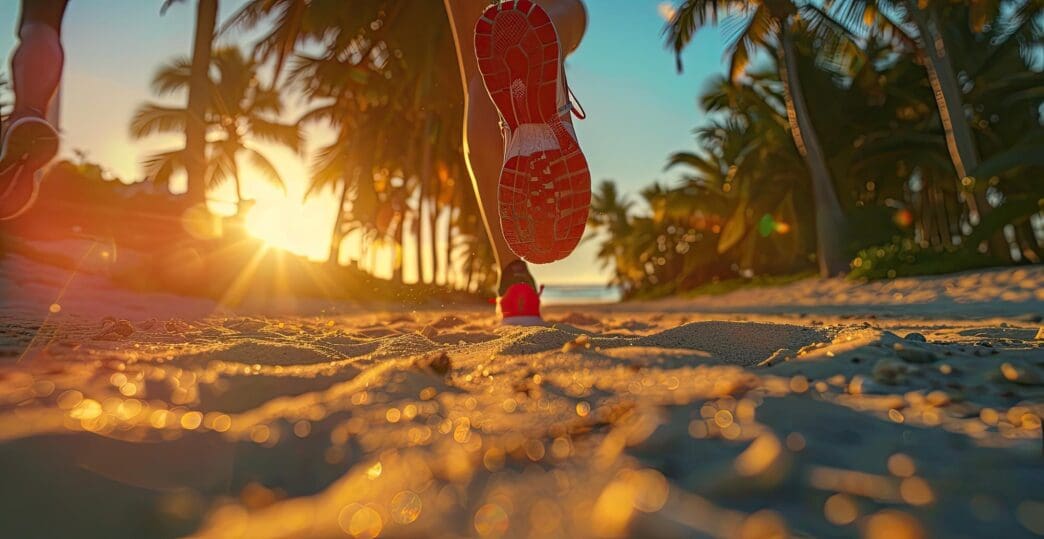A Quick Takeaway
The Story Behind the Trend
How to Make It Work for You
The Community View
For anyone looking to elevate their running game, from casual joggers enjoying the scenic Miami Beach boardwalk to serious athletes training for their next marathon, finding the perfect pair of running shoes is absolutely paramount for peak performance and injury prevention. The right footwear acts as a critical interface between your body and the ground, influencing everything from your stride efficiency to the longevity of your joints. This essential quest for optimal gear can be successfully undertaken at Miami Beach’s specialized running stores, where expert guidance ensures you select shoes tailored to your unique biomechanics and running goals, ultimately unleashing your full potential on every run.
The Science Behind the Stride: Why Your Shoes Matter
Understanding the importance of proper running shoes goes beyond mere comfort; it delves into the intricate biomechanics of the human body in motion. Every step a runner takes generates impact forces that ripple through the feet, ankles, knees, and hips. The right shoes are engineered to mitigate these forces, providing crucial cushioning and support.
Improper footwear can lead to a cascade of issues, from common aches like shin splints and plantar fasciitis to more severe stress fractures and joint pain. A well-chosen shoe works in harmony with your natural gait, promoting efficient movement and reducing the risk of overuse injuries. This allows runners to train more consistently and push their limits safely, translating directly into improved performance and a more enjoyable running experience.
Key Factors in Choosing Your Perfect Pair
Selecting the ideal running shoe is a personalized process, as no single shoe is perfect for everyone. Several critical factors must be considered to ensure the best match for your individual needs and running style.
Understanding Your Foot Type
Your foot’s arch plays a significant role in how you distribute impact. Individuals typically fall into one of three categories: neutral arches, flat arches (overpronation), or high arches (supination). Knowing your arch type is the first step in narrowing down shoe choices, as different shoes are designed to accommodate these variations.
Neutral-arched runners generally have an efficient shock absorption system and can often wear a wide range of neutral shoes. Those with flat arches tend to overpronate, meaning their feet roll excessively inward, requiring stability or motion control shoes to correct this movement. Conversely, high-arched runners often supinate, rolling their feet outward, and benefit from neutral shoes with ample cushioning to absorb impact.
Gait Analysis: The Foundation of Fit
A professional gait analysis is arguably the most valuable tool in the shoe selection process. This involves observing how your foot lands and pushes off during a run, typically on a treadmill within a specialty store. Experts can identify pronation patterns and other biomechanical nuances that inform shoe recommendations.
During a gait analysis, a trained specialist will assess your natural stride, often using video playback to pinpoint specific movements. This objective evaluation helps them recommend shoes that either provide necessary stability to control excessive motion or offer enhanced cushioning for those who need more shock absorption without interfering with a neutral stride.
Considering Your Running Surface
The terrain you primarily run on significantly impacts the type of shoe you need. Miami Beach offers a diverse landscape, from the paved boardwalks and streets to potentially softer beach sand or nearby park trails. Each surface demands different shoe characteristics for optimal performance and protection.
For road running, which involves hard, unforgiving surfaces, shoes with substantial cushioning are paramount to absorb impact. Trail runners, however, need shoes with aggressive outsoles for grip, enhanced durability, and often a rock plate for protection against uneven terrain. If you split your time between various surfaces, a versatile “hybrid” shoe might be a suitable compromise, though specialized shoes will always offer the best performance for their intended environment.
The Importance of Proper Fit
Even the most technologically advanced shoe is useless if it doesn’t fit correctly. A proper fit ensures comfort, prevents blisters, and allows the shoe’s features to function as intended. Key areas to focus on include the toe box, midfoot, and heel.
There should be about a thumb’s width of space between your longest toe and the end of the shoe. The midfoot should feel snug but not tight, and the heel should be secure without slipping. Always try on shoes with the type of socks you typically wear for running, and consider shopping later in the day when your feet are naturally slightly swollen.
Cushioning, Stability, and Drop
Running shoes vary widely in their cushioning levels, from minimalist designs with very little padding to maximalist shoes with thick, plush midsoles. Your preference and biomechanics will dictate the right balance. Stability features, such as medial posts, are built into shoes to reduce overpronation, while neutral shoes offer uniform cushioning.
The “drop” refers to the height difference between the heel and the forefoot. A higher drop (10-12mm) is traditional and often suits heel strikers, while a lower drop (0-6mm) encourages a midfoot strike and can be beneficial for those seeking a more natural feel. Experimenting with different drops can help you find what feels most comfortable and efficient for your stride.
The Miami Beach Advantage: Where to Find Your Match
Miami Beach and its surrounding areas boast a vibrant running culture, supported by excellent specialty running stores. These establishments offer far more than just a wide selection of brands; they provide invaluable services that online retailers simply cannot replicate.
The Value of Specialty Running Stores
Visiting a dedicated running store is crucial for a truly personalized fitting experience. Unlike general athletic stores, specialty shops employ staff who are often avid runners themselves and possess deep knowledge of shoe technology, biomechanics, and injury prevention. Their expertise is invaluable in navigating the vast array of options.
These stores typically offer complimentary gait analysis, allowing trained professionals to observe your running form and recommend shoes best suited to your unique needs. They encourage you to try on multiple pairs, run a short distance on a treadmill or even outside the store, and provide honest, informed feedback. This hands-on, expert-guided approach significantly increases the likelihood of finding a shoe that genuinely enhances your performance and comfort.
Making the Most of Your Fitting
To ensure a successful fitting session, come prepared. Wear your usual running attire and the type of socks you typically run in. If you have old running shoes, bring them along; their wear pattern can offer clues about your gait. Don’t rush the process; take your time trying on different models and running in them to assess comfort and feel. Remember, the goal is to find a shoe that feels great from the moment you put it on, not one you hope to “break in.”
When to Replace Your Running Shoes
Even the perfect pair of running shoes has a finite lifespan. Over time, the cushioning materials compress and lose their responsiveness, and the outsole tread wears down, reducing grip and stability. Continuing to run in worn-out shoes can negate the benefits of proper footwear and increase your risk of injury.
A general guideline is to replace running shoes every 300 to 500 miles, though this can vary based on your weight, running style, and the terrain you frequent. Pay attention to signs of wear, such as flattened midsoles, worn-down treads, or new aches and pains that emerge during or after your runs. Regular replacement is an investment in your health and performance, ensuring you always have the support and cushioning you need.
Unleash Your Potential
The journey to peak running performance in Miami Beach begins with the right foundation: your shoes. By understanding your foot type, undergoing a professional gait analysis, and leveraging the expertise available at local specialty running stores, you can confidently select footwear that aligns perfectly with your body and your running aspirations. This commitment to proper gear will not only safeguard your health but also empower you to conquer every mile with comfort, efficiency, and joy.







